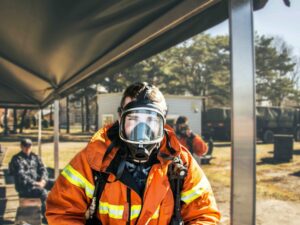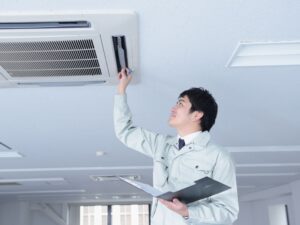
Understanding Legionella: Risks, Prevention, and Water Safety Measures
Legionella bacteria are a growing concern in workplaces and public facilities. These bacteria can cause severe respiratory illnesses such as Legionnaires’ disease and Pontiac fever. Understanding the risks associated with Legionella and implementing robust water safety measures is crucial for maintaining a safe environment.
What is Legionella?
It’s a type of bacteria found naturally in freshwater environments like lakes and streams. However, when these bacteria grow in human-made water systems, such as cooling towers, hot tubs, and plumbing systems, they pose significant health risks.
The bacteria thrive in warm water temperatures, typically between 20°C and 50°C, making certain water systems ideal breeding grounds.
Health Risks Associated with Legionella
The disease can cause two types of illnesses: Legionnaires’ disease and Pontiac fever.
Legionnaires’ Disease
This is a severe form of pneumonia caused by inhaling water droplets contaminated with Legionella bacteria. Symptoms include coughing, shortness of breath, high fever, muscle aches, and headaches. If left untreated, Legionnaires’ disease can be fatal, especially for individuals with weakened immune systems, the elderly, or those with underlying health conditions.
Pontiac Fever
A milder illness caused by the same bacteria, Pontiac fever shares flu-like symptoms such as fever, headaches, and muscle aches but does not lead to pneumonia. Unlike Legionnaires’ disease, Pontiac fever is not typically life-threatening and usually resolves without treatment.
Causes & Transmission of Legionella
Legionella bacteria become a health risk when they grow in water systems that are not properly maintained. The bacteria can multiply in various parts of a water system, including tanks, pipes, and cooling towers. Once the bacteria proliferate, they can spread through the air in small water droplets or mist, which people then inhale.
Common sources of outbreaks include:
- Cooling Towers: Used in air conditioning systems, cooling towers can disperse water droplets containing Legionella bacteria into the air.
- Hot Tubs & Spas: The warm water in hot tubs provides an ideal environment for Legionella to thrive.
- Plumbing Systems: Inadequately maintained or complex plumbing systems can harbour stagnant water, where Legionella can multiply.
- Fountains & Decorative Water Features: These can generate aerosols containing Legionella if not properly disinfected.
The Importance of Legionella Risk Assessments
Conducting regular Legionella risk assessments is a critical step in preventing outbreaks. These assessments help identify potential sources of the bacteria within a water system and evaluate the effectiveness of existing control measures.
A comprehensive risk assessment should include:
- System Analysis: Review the entire water system, including pipes, tanks, and any equipment that uses water, to identify areas where Legionella may grow.
- Water Temperature Monitoring: Regularly monitor the water temperature in different parts of the system. Water should be kept either below 20°C or above 50°C to minimise the risk of Legionella growth.
- Water Testing: Periodically test the water for Legionella bacteria to detect contamination early.
- Evaluation of Current Control Measures: Assess the effectiveness of the existing control measures, such as disinfection methods, and make necessary adjustments.
- Documentation: Keep detailed records of the risk assessment process, findings, and actions taken to mitigate risks.
Apex Environmental’s Legionella Risk Assessment Approach
At Apex Environmental, we conduct Legionella Risk Assessments in strict accordance with SANS 893 (Part 1 and 2) standards. Our approach is designed to enable the risk to be accurately determined, allowing for the implementation of appropriate measures to quantify, reduce, and control the risk.
Our risk assessment process is comprehensive and includes:
Compliance with Regulations
We ensure that the Legionella Risk Assessment enables management to comply with the Occupational Health and Safety Act, 1993 (Act 85 of 1993) and the Regulations for Hazardous Biological Agents (R 1887 of 2022). This compliance is crucial for the implementation of successful environmental health and safety programs.
Monitoring & Control
Where necessary, we incorporate monitoring measures to quantify the risk, ensuring that any potential hazards are continuously managed. This proactive approach helps in maintaining a safe environment and preventing Legionella outbreaks.
Comprehensive Reporting
Our detailed reports provide a clear overview of the risk factors identified, along with recommended control measures. These reports serve as a valuable tool for management to take informed actions that align with legal requirements and best practices.
Prevention & Management Strategies
Preventing Legionella contamination requires a proactive approach to water system management. Implementing the following strategies can significantly reduce the risk:
- Regular Maintenance: Ensure that water systems are regularly cleaned, disinfected, and maintained according to the manufacturer’s guidelines and industry standards.
- Temperature Control: Maintain hot water systems at temperatures above 50°C and cold-water systems below 20°C. This can inhibit the growth of Legionella bacteria.
- Avoiding Stagnation: Regularly flush unused or rarely used water outlets to prevent water from becoming stagnant, which provides an ideal environment for Legionella growth.
- Water Treatment: Consider the use of chemical treatments, such as chlorine dioxide or copper-silver ionization, to control Legionella growth in water systems.
- Filtration Systems: Use high-quality water filtration systems that can remove or kill Legionella bacteria before they enter the water system.
- Monitoring & Testing: Continuously monitor the water quality and perform regular tests to ensure that Legionella levels are within safe limits.
Developing a Water Safety Plan
A Water Safety Plan (WSP) is a comprehensive strategy that outlines the steps needed to manage and minimise the risks associated with Legionella and other waterborne pathogens. The plan should include:
- Risk Assessment: A detailed water system evaluation to identify potential hazards and assess risks.
- Control Measures: Specific actions and procedures to control the risks identified in the assessment.
- Monitoring Protocols: Regular checks and tests to ensure that control measures are effective and that the water system remains safe.
- Corrective Actions: Clear guidelines for responding to incidents of detection or system failures.
- Documentation & Record-Keeping: Keeping thorough records of all assessments, maintenance activities, and test results.
Conclusion
Understanding the risks posed by Legionella bacteria and implementing robust prevention and management strategies is crucial for ensuring water safety in the workplace. Regular risk assessments, effective control measures, and a comprehensive Water Safety Plan can significantly reduce the likelihood of this bacteria contamination and protect the health of employees and visitors.
By staying vigilant and proactive, businesses can create a safer environment and avoid the serious health consequences associated with Legionella.








